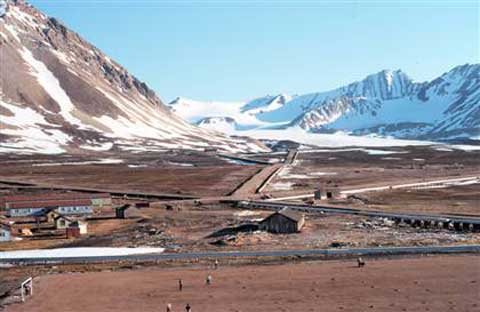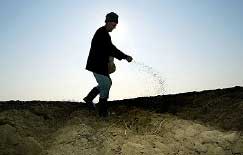Norway is to build a "doomsday vault" in a mountain close to the North Pole that will house a vast seed bank to ensure food supplies in the event of catastrophic climate change, nuclear war or rising sea levels, New Scientist says.
2006 01 14
From: physorg.com

In announcing it would create a global seed bank on the Svalbard Islands, Norway did not say exactly where but the archipelago includes a few existing settlements like this one at Alesund.
Built with Fort Knox-type security, the three-million-dollar vault will be designed to hold around two million seeds representing all known varieties of the world's crops.
They are the precious food plants that have emerged from 10,000 years of selection by farmers.
The facility "would essentially be built to last forever," according to a feasibility study.
It will be built deep in permafrost in the side of a sandstone mountain on the Norwegian island of Spitsbergen, 1,000 kilometers (625 miles) from the North Pole, the British weekly says in its next issue, out on Saturday.
With walls of one-metre- (3.25-feet-) thick concrete, the seed bank will be protected behind two airlocks and high-security blast-proof doors.
The facility will not be permanently manned but "the mountains are patrolled by polar bears," the report quotes Cary Fowler, director of the Global Crop Diversity Trust, an organisation that is promoting the project, as saying.
To be preserved, the seeds must be kept below freezing point.
Operators plan to replace the air inside the vault once a year at winter-time, but even if for some reason this becomes impossible, the permafrost will still keep the seeds viable.
The thick walls, airlocks and doors mean that even if global warming accelerates badly, it would take many decades for hotter air to reach the seeds.
"This will be the world's most secure gene bank by some orders of magnitude," said Fowler. "But its seeds will only be used when all other samples have gone for some reason. It is a fail-safe depository, rather than a conventional seed bank."
The proposal is backed by Norway, which sketched a similar project back in the 1980s that was thwarted at the time by the Soviet Union's access to Spitsbergen.
The seed bank is expected to be created next year.
© 2006 AFP
Article from: http://www.physorg.com/news9794.htmlJan%2012
Freezer food: Global seed bank set for Arctic
Norway to store samples as way to protect genetic diversity
From: msnbc.msn.com
 OSLO, Norway - Using its natural environment as a freezer of sorts, Norway has announced it will create a seed bank on a remote Arctic island that aims to preserve the genetic diversity on the planet.
OSLO, Norway - Using its natural environment as a freezer of sorts, Norway has announced it will create a seed bank on a remote Arctic island that aims to preserve the genetic diversity on the planet.
The Arctic seed bank, to open next year on the Svalbard Islands, is intended to protect the genetic materials of critical world food crops from such threats as plant epidemics, climate change, war and natural disasters, a foreign ministry news release said.
“The depot will be unique in the world,” the ministry said. “The depot will have examples of seeds that are already stored in gene banks in other parts of the world, and will serve as an extra safety net for the world’s food supplies.”
The Svalbard Archipelago, some 300 miles north of the mainland, was selected because of its remote location, cold climate and permafrost.
"Owing to the permafrost, the seeds will retain their ability to germinate for a long time, even if electricity supplies fail," the ministry said.
Nations 'own what is in the bank'
Foreign Ministry spokeswoman Wera Helstroem said many details still have to be settled, since the project has just been approved. But she said it was already clear that the facility will include about $3 million in new infrastructure.
“Svalbard is an ideal location for such a facility,” Helstroem said. “Norway is also seen as a good place, because it has a stable society and democracy.”
The number of seeds, and types of plants, will be determined by the countries deciding to use the seed bank, she said. Norway intends to ease any concerns about ownership by operating the seed depot as if it were a bank vault.
“It’s like having a bank box. We own the vault, but the other countries own what is in the bank box,” Helstroem said. “They can put things in and take them out whenever they want to.”
© 2006 The Associated Press. All rights reserved. This material may not be published, broadcast, rewritten or redistributed.
